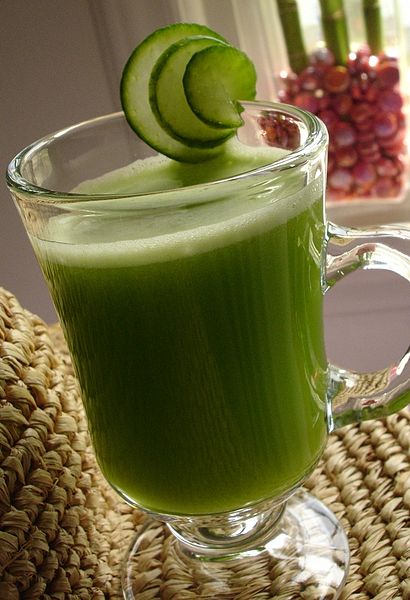In Ayurveda, we believe that the skin reflects what’s happening on the inside.
Acne is the reflection of an physical imbalance; a vitiation of the both the energetic forces called the doshas and the body tissues. I want to teach you how you can treat your acne by eating a diet that brings these forces back into balance. Without the right diet, you cannot expect healthy, lasting improvement in your skin. This goes both for teenagers and adult women who commonly suffer from acne, myself included.
In your search to cure your acne, I’m sure you’ve already read that you should lay off the sugar, chocolate, junk food and coffee. And I’d have to agree—these foods definitely don’t support a radiant complexion.
But eliminating these four foods alone isn’t enough, as I’m sure you’ve already experienced. All food affects us on a much deeper level than modern medicine credits. I’ve derived this anti-acne diet from the ancient wisdom of Ayurveda, which doesn’t look at foods solely from a quantitative context as modern medicine does—such as sugar, fat and caloric content.
Instead, Ayurveda qualitatively evaluates food’s effect on the body after the process of digestion. Every food in Ayurveda is assessed according to the way it cools or heats the body, the way in which it influences the bodily energies called the doshas, and its likelihood of putrefying into toxins.
This anti-acne diet isn’t a short list of sugars, fats and caffeines to avoid. Instead, it’s a detailed program that’s centered around foods that cool the pitta dosha and eliminate toxic buildup; both of which are primarily to blame in the case of acne.
To help you understand why your skin is suffering, here’s a mini Ayurvedic physiology lesson. Your pitta dosha has somehow become vitiated, either through improper food or lifestyle, and mixed with toxins that Ayurveda calls aama. Their combination has vitiated the body tissues, and inflamed, angry acne has manifested in your skin.
Here, your diet can either work for or against you. The wrong diet, full of hot, spicy, salty and sour foods, will further aggravate the pitta dosha, toxins, and acne. The right diet—full of wholesome, cooling, astringent, bitter and naturally sweet foods—will help bring your pitta back into balance and digest toxins to heal acne.
When I was suddenly hit with adult acne after a lifetime of blemish-free skin, I was at a total loss to understand why I was breaking out and how to fix it. I was not a teenager, I was a grown woman! Little did I know that up to 45 percent of women my age were also suffering from adult acne. Nonetheless, I was embarrassed and extremely frustrated. I saw multiple dermatologists, unhappy with what each of them prescribed—a six month course of antibiotics (!!!), chemical creams with nasty side effects and expensive laser treatments.
Not a single one of these dermatologists asked me about my digestion nor suggested anything about diet.
At the time, I had horrendous digestion. I also worked eight hours a day under the strong Hawaiian sun (a majorly pitta-aggravating factor), supplemented my energy with espresso and heavy pastries, and closed each day with a quarter cup of peanut butter just before sleeping. In retrospect it’s all very obvious—of course I had acne. But I didn’t have the knowledge then that I have now to understand what I was doing wrong or how to heal.
Looking back, I’m shocked at each dermatologist’s disregard for my digestion. Diet is so important for prevention and cure of any disease, acne included. We are, after all, what we eat! This isn’t just a silly metaphor but truth. Each of our body tissues is directly or indirectly nourished by food. A diet that is unwholesome or incompatible will absolutely affect the body tissues and show itself in the skin.
Embrace this concept if you want to heal. This cooling, clean diet will help relieve inflamed, red, angry, sensitive, burning acne. Cooling doesn’t mean cold foods like those straight from the fridge (which you definitely want to avoid here!) but foods that are cooling by nature. This diet also brings in foods that are especially nourishing for skin, eliminates those that aren’t, and excludes processed junk food that isn’t really food anyway.
Now, this diet might need some minor tweaking on your part. Nothing in Ayurveda is without individualization. Listen to your gut. If one of the these foods doesn’t sit well with you, even if it’s on the favor list, don’t eat it. And choose foods according to their seasonal availability by shopping at your local farmer’s market.
Although the pitta dosha is always at play in acne, you might be predominantly affected by the vata or kapha dosha. If you have a drier, blackhead-prominent, painful vata-type of acne, avoid any foods on this list that can be constipating or gas-producing like cruciferous vegetables, dried fruits and beans (except mung and lentils).
If you have large whiteheads and cystic, kapha-type acne, avoid heavy vegetables like sweet potatoes and pumpkins, and go very easy on the fruits, dairy and oil.
I want to mention that your eating habits and water intake are also very important in treating acne. .
As you incorporate this anti-acne diet, center your meals around freshly cooked, organic whole foods: vegetables, grains and beans. Avoid spicy, sour, salty and fermented foods, and stay away from all junk food and processed food. Avoid leftovers as much as possible. If this isn’t possible, consume food within 24 hours of cooking.
Definitely incorporate spices into your food, as these have the capacity to reduce pitta, digest toxins and improve the digestive fire.
Have a light, warm breakfast, a solid lunch, and a light dinner, with a small snack or fruits or steamed veggies in between.
For more information, check out:
It’s More Than What We Eat: 12 Ayurvedic Tips for Healthy Eating
The Art of Drinking Water: 10 Ayurvedic Tips for a Happily Hydrated Body
The Anti-Acne Diet
| Favor | Avoid | |
|
Fruits |
Sweet fruits in general | Sour fruits in general |
| Sweet apples, berries, cherries, grapes, plums, pomegranate, papaya, pineapple and oranges | Sour apples, berries, cherries, grapes, plums, pomegranate, papaya, pineapple and oranges | |
| Banana | Cranberries | |
| Dates | Grapefruit | |
| Figs | Lemon/lime | |
| Melon | Mango | |
| Pears | Peaches | |
| Watermelon | Tamarind | |
| Strawberries | ||
|
Vegetables |
Asparagus | Bell pepper |
| Beets | Chili pepper | |
| Bok choy | Corn | |
| Brussels sprouts | Eggplant | |
| Broccoli | Mustard greens | |
| Cabbage | Olives | |
| Cauliflower | Potato | |
| Celery | Raw onion | |
| Cucumber | Radish | |
| Green beans | Tomato | |
| Fennel | ||
| Jicama | ||
| Leafy greens | ||
| Okra | ||
| Peas | ||
| Pumpkin | ||
| Sweet potato | ||
| Squash | ||
| Turnips | ||
| Zucchini | ||
| Watercress | ||
|
Grains |
Amaranth | Buckwheat |
| Barley | Corn flour | |
| Couscous | Millet | |
| Granola | Yeasted bread | |
| Oats | ||
| Quinoa | ||
| White rice (basmati, jasmine) | ||
| Brown rice (basmati, jasmine) | ||
| Wheat (in moderation) | ||
|
Legumes |
Beans in general | Red lentils |
| Tempeh | ||
| Tofu | ||
|
Dairy |
Ghee (minimal amounts) | Dairy in general |
| Cheese | ||
| Cream cheese | ||
| Ice cream | ||
| Yogurt | ||
|
Meat |
Best avoided | Meat in general |
| Eggs | ||
| Fish | ||
| Meat | ||
| Seafood | ||
|
Nuts and Seeds |
Almonds (minimal amounts) | Nuts in general |
| Coconut | Cashews | |
| Hemp seeds | Peanuts | |
| Pumpkin seeds | Sesame seeds | |
| Sunflower seeds | Tahini | |
|
Oils |
Coconut (minimal amounts) | Canola |
| Ghee (minimal amounts) | Corn | |
| Sunflower (minimal amounts) | Sesame | |
|
Spices and Condiments |
Bay leaves | Cayenne |
| Cinnamon | Chili | |
| Cardamom | Cloves | |
| Coriander | Garlic | |
| Cilantro | Dry ginger | |
| Cumin | Ketchup | |
| Dill | Kimchi | |
| Fennel | Mayonnaise | |
| Fenugreek | Mustard | |
| Fresh ginger | Mustard seeds | |
| Lemongrass | Pickles | |
| Mint | Sauerkraut | |
| Parsley | Vinegar | |
| Saffron | ||
| Turmeric | ||
|
Sweets and Sweeteners |
Dates | Chocolate |
| Figs | Heavy desserts | |
| Jaggery | Junk food | |
| Maple syrup | Honey | |
| Rock sugar | Pastries | |
| Sucanat | Processed food | |
| Sweet fruits | White sugar | |
|
Beverages |
Almond milk | Alcohol |
| Chamomile tea | Carbonated drinks | |
| Coconut water | Coffee | |
| Dandelion tea | Iced drinks | |
| Fennel tea | Iced tea | |
| Licorice tea | Kombucha | |
| Rice milk | Lemonade | |
| Water | Sour fruit juices |
Reference:
Lad, Vasant. Textbook of Ayurveda: Fundamental Principles. Albuquerque: The Ayurvedic Press, 2002.
*
Relephant Bonus Video:
*
Relephant Read:
Ditch these 3 Culprits to Eliminate Acne.
Author: Julie Bernier
Editor: Renee Picard
Image: Unsplash/Isabell Winter; Wiki Commons
 Share on bsky
Share on bsky


Read 24 comments and reply